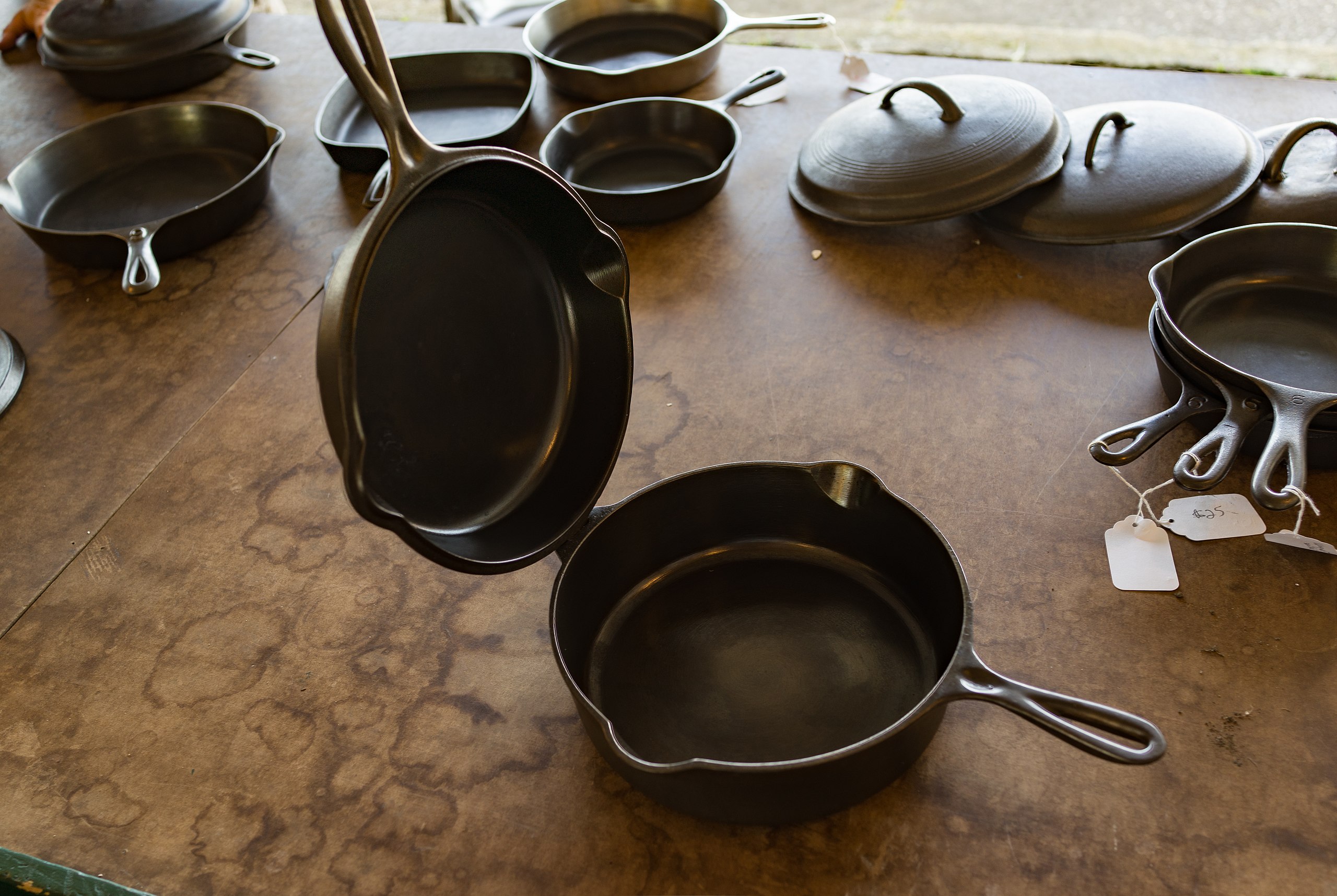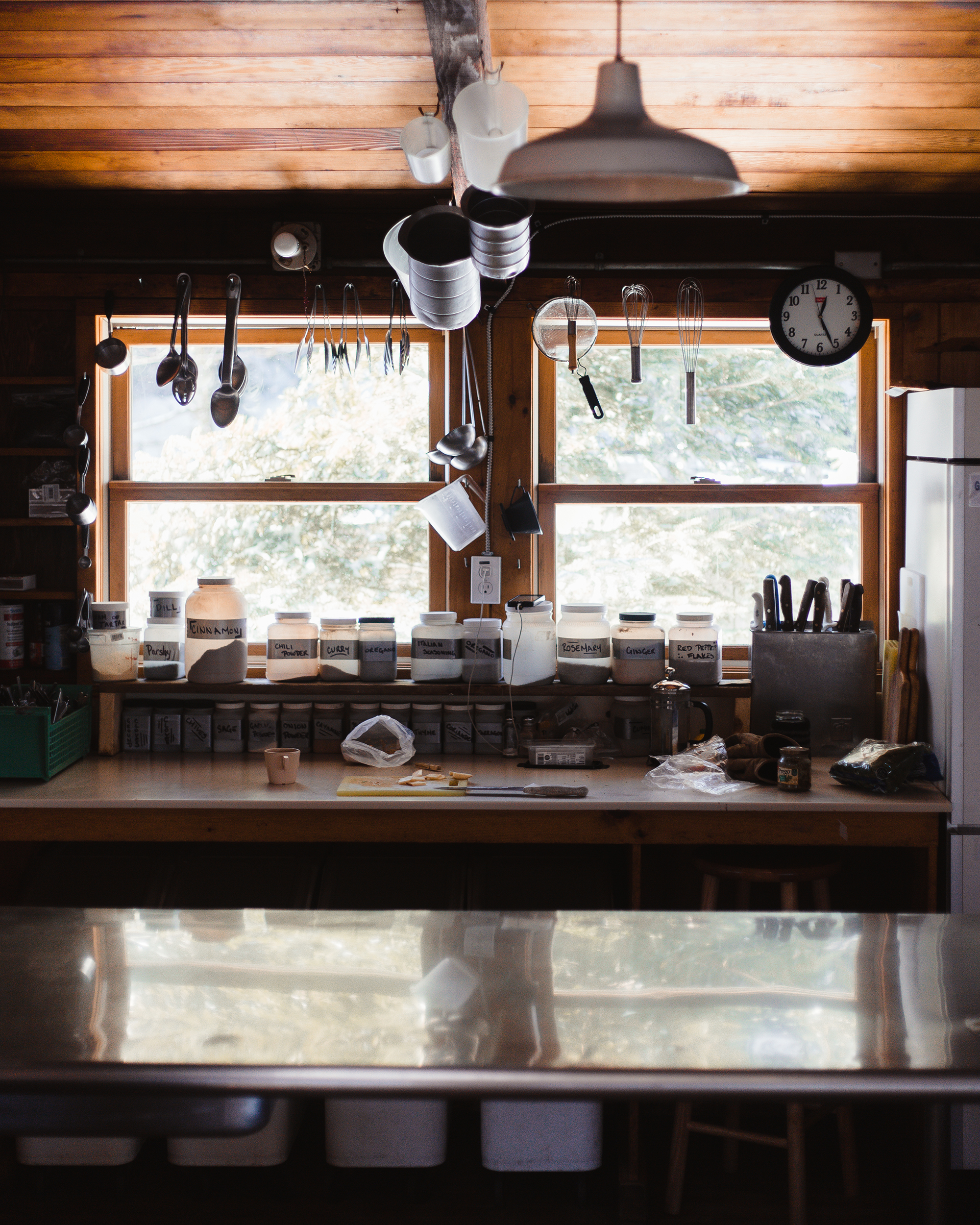The sun dipped low over the mountain portal when I lit my stove. Beneath the glow of my headlamp I added oil to my cast iron pan. Then came the onions, the peppers, and the meat. I placed a hunk of carne asada into the center of the pan and watched the juices flow. Oil and water pooled together, never becoming one. And my nostrils filled with the scent of controlled perfection. Maybe it was the even heat of the pan, or the perfect non-stick layer that contributed to the juicy evenly-cooked meat. I wasn’t a skilled chef, by any means. So, it had to be the pan.
Cast iron won me over for the first time when I was car camping in the desert. My friends cooked chicken, marinara, and all kinds of other meals in the same pan. And every one of them made my mouth water. Seeing the delivery of delicious meals over and over, I immediately began asking questions: Why did you bring cast iron to the backcountry instead of aluminum? What does it do that other pans won’t do? And is the cleaning process as hard as everyone says it is?

What Makes Cast Iron Special
Within moments, I learned that cast iron pans are one of the most versatile pans available. You can use them in a standard kitchen. You can stick them in the oven. You can place them on top of a hot bed of coals, and the result is consistent and even.
Cast iron is also special in that it’s nearly indestructible. If you somehow manage to injure the pan by letting it rust, or stripping it of its seasoning, nearly every cast iron pan can be refurbished with gentle care and attention.
The Cleaning Process
I used to shy away from my mom’s cast iron pan because she always worried about damaging the seasoning. And I was convinced that it was just a matter of time before I’d screw something up, ultimately creating a rusted and time-consuming mess. But once I got a cast iron pan of my own, I learned that proper care is actually pretty easy. You can clean it with a gentle soap and water, as long as you don’t soak it, and you remove all moisture after you’re done washing the pan. This can be accomplished by heating it on the stove for a few minutes after each wash.
I tend to avoid using soap and water when I can. Instead, I rely on an abrasive material like chunky salt and a sponge to remove debris from the surface of the pan.This method is ideal in the backcountry where your water supply is particularly limited. Instead of wasting those precious droplets on a thorough washing, you can maintain a clean cast iron pan with a little bit of salt and elbow grease.

Seasoning the Pan
When everything is said and done, you must apply a layer of oil or fat on the surface of the pan, and heat it until it becomes polymerized. This is your “seasoning,” or your protective, non-stick layer. Every time you heat a layer of fat on the pan, you’re building up the pan’s seasoning which results in more flavorful food, and a long-lasting pan.
Reasons Not to Love Cast Iron
There aren’t many reasons not to love cast iron. The material is a little bit heavy, which can make using it hard on some people. Additionally, with the appropriate seasoning, cast irons can cook just about anything. But particularly acidic foods (like lemon) can potentially cause leaching, which isn’t good for you.

Reasons to Love It
Cast iron requires less water for maintenance. It builds up natural anti-stick properties, making the cooking experience simple and easy. These pans are also long-lasting, versatile, and incredibly affordable. In fact, you can find a cast iron pan for anywhere from $20 to $200.
Mary Beth Skylis
Mary Beth began her journey in the outdoors while thru-hiking the Appalachian Trail in 2015. She soon went on to backpack the Colorado Trail, and part of Nepal's Annapurna Circuit. Today, she resides in North Carolina where she can commonly be found rock climbing, surfing, or backpacking. Some of her recent work can be found in Outside and Backpacker Magazines.




